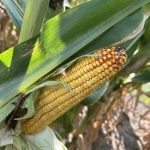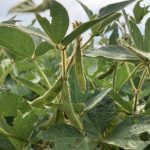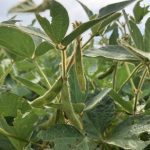CANADIAN CATTLE INVENTORIES
Statistics Canada reported July 1, 2010 cattle inventories down 4.9 per cent or 724,000 head from last year to 14 million head. Canadian cattle inventories are now down 17 per cent from the 2005 peak and nine per cent below 2002 levels to be the smallest since 1994. The decline in total inventories came from all categories and all provinces. Producers have continued to reduce the national herd with weak economic recovery, uncertain markets, lost equity and producers leaving the industry. The beef cow herd was down 5.1 per cent to 4.36 million head. Beef heifers retained for breeding decreased by 2.3 per cent to 623,600 head, as producers continue to market heifers as opposed to retaining them. The number of heifers for slaughter was down 5.9 per cent at 1.15 million head. The overall smaller heifer number was expected with smaller calf crops coming forward over the last several years. Slaughter steer inventories were down 10 per cent at 1.50 million head. Canada’s 2010 calf crop was 4.4 per cent smaller at 4.7 million head. While the decline in 2009’s calf crop was more than offset by smaller feeder exports to the U.S. last year, that will not be the case this year with the decline in the calf crop being larger than the decline in feeder exports.
Read Also

Drake Meats building a federally inspected facility near Saskatoon
The company is expanding its national reach, but keeping its roots in rural Saskatchewan
Despite significantly improved pasture conditions this summer beef cow numbers were down in all provinces with the largest declines seen in British Columbia (-10.8 per cent), followed by Quebec (-7.5 per cent), Saskatchewan (-5.9 per cent), Alberta (-4.8 per cent), Atlantic provinces (-4.6 per cent), Ontario (-2.4 per cent), and Manitoba (-2.2 per cent). Larger declines were seen in the West with beef cows down 5.2 per cent versus the East with beef cows down 4.5 per cent. The West accounts for 87 per cent of the Canadian beef cow herd.
Looking forward to the fall run the number of beef feeders and calves outside of feedlots on July 1 was down 7.2 per cent or 459,000 head to be the smallest since 2000. Tighter supplies across North America will be supportive to prices this fall but feedlots will be looking closely at feed costs and risk associated with input costs as well as the live cattle futures and dollar.
U.S. CATTLE INVENTORIES
U.S. cattle inventories also declined on July 1 by 1.2 per cent or 1.2 million head to 100.8 million head. Beef cow inventories were down 1.6 per cent or 500,000 head to 31.7 million head. This is the fourth consecutive year of liquidation in the U.S. herd despite improved profitability and favourable pasture conditions, although smaller beef inventories were expected with continued strong beef cow slaughter. Beef replacement heifer numbers were down 2.2 per cent at 4.4 million head indicating that there is little to no interest in expanding or even stabilizing the national herd size. This means that the calf crops into 2011 and 2012 will be even smaller than this year. The 2010 calf crop is estimated to be 35.4 million head — a 50-year low. Dairy cows were down 100,000 head or one per cent at 9.1 million head. However, dairy replacement heifers were up 2.5 per cent at 4.05 million head pointing towards stabilization within the dairy herd. U.S. cow slaughter is up 3.5 per cent in 2010 with beef cow slaughter up 10.8 per cent and dairy cow slaughter down 4.4 per cent. Improved profitability in the dairy sector has increased heifer retention and decreased cow slaughter. However, this is not being seen on the beef side with cow slaughter still large — look for smaller inventories again on January 1, 2011.
Cattle on feed for slaughter were up three per cent on July 1 at 12 million head; however this year-over-year difference is more a reflection of lower on-feed numbers in 2009 than any real increase in 2010. The number of significant interest is the number of feeders outside of feedlots — providing an indication of the feeder/calf supply for this fall. This number was down one million head or 2.6 per cent at 37.5 million head. Smaller feeder supplies will lead to smaller fed slaughter in future months exasperating overcapacity issues in both the feedlot and packing sectors. Smaller supplies will be supportive to the overall market in all segments (fed, feeder and calves) but will also put pressure on margins as there is competition for numbers and efficiencies by feedlots.
When Canadian and U.S. inventories are combined, the total North American July 1 beef cow herd is down two per cent from year ago and down seven per cent from 2005 at 36 million head, with the U.S. herd representing 88 per cent of the total.
Trade
In 2010, January to July Canadian beef exports are up 16 per cent compared to the same period in 2009. Based on year-to-date activity it is projected that total beef exports will be up 12 per cent from 2008 levels at 439,000 tonnes. Larger exports can be attributed to larger production and stronger global demand. Year-to-date Canadian beef imports are down 9.5 per cent with non-NAFTA imports down 26 per cent while imports from the U.S. (Canada’s major supplier) are down only two per cent. Despite larger domestic production, increased exports and decreased imports have resulted in reduced net beef supplies in 2010.
FED PRICES
Alberta fed prices year to date (January to September 2010) have averaged $87/cwt compared to $88/cwt in 2009. The U.S. has seen a $10/cwt increase in prices over the same time frame. Large supplies of fed cattle this spring increased slaughter levels and pressured prices throughout the first half of the year. Small placements on feed throughout the summer due to weather and a smaller calf and feeder supply will significantly reduce fed supplies in November and December providing some price support. In addition, fed cattle have been pulled forward in September so supplies will be tighter throughout the fourth quarter. Alberta fed prices in September at $89.60/ cwt averaged eight per cent or $7/cwt higher than 2009. Steady to higher prices are anticipated throughout the fall.
Fed cattle exports in 2010 are up 29 per cent estimated to finish the year at 676,000 head and surpassing 2008 volumes. Larger exports have been possible with significantly larger fed cattle supplies in Canada. The current split is 40 per cent heifers down from 47 per cent in 2009 and the 1995-2002 average of 48 per cent. Up to July 66 per cent of the fed cattle exports originated in Alberta, with Manitoba running second at 12 per cent.
FEED GRAINS
Looking at the most recent forecasts for the 2010-11 crop year, barley production is expected to fall 13 per cent to 8.26 million tonnes. The decline in barley production can be attributed to near-record rainfall in the Prairies reducing the number of acres seeded to barley. Barley production will be down 30 per cent from two years ago with the largest decline seen in Saskatchewan, down an estimated 43 per cent to 2.3 million tonnes while Alberta production is estimated to be up 28 per cent to 4.9 million tonnes. In 2010-11, domestic barley consumption is anticipated to be steady and barley exports up four per cent to 2.2 million tones. This leaves July 2011 ending stocks falling to 1.1 million tonnes, down 57 per cent from 2.58 million tonnes the end of July 2010. Statistics Canada is reporting all wheat, canola and barley production to be lower this year, while rain and frost are anticipated to increase feed supplies of wheat and other crops.
Barley prices have increased from the first half of the year when they averaged $152/tonne ($3.30/bu.). The first week of October saw barley trading between $163-$165/tonne. The average Lethbridge feed barley price is forecast to stay strong with higher corn prices and smaller supplies tightening ending stocks. Comparing the March 2011 Western Barley futures of $185/tonne ($4.03/bu.) to the current Lethbridge barley price of $165/tonne ($3.59/bu.) there is a 44 cents/bu. difference. For every 20 cents/bu. move in barley prices, calf prices must adjust $4/cwt and yearling prices must adjust $2/cwt to maintain the same breakeven. With a projected 44 difference between current barley prices and the March future price, calf prices must adjust $9/cwt down and the yearling must adjust $4.50/cwt down to keep the same break-even.
Corn prices have been moving higher with strong export business and smaller yields tightening supplies. The U.S. corn harvest continues to be reduced by USDA, declining from an original 13.2-billion-bushel record crop year to 12.6 billion bushels with yields reduced to 155.8 bu./acre. This brings the stocks-to-use ratio to 7.9 per cent only slightly higher than the demand rationing levels experienced in 1995-96 of 6.7 per cent. It will not take much of a change to the balance sheets to reach those levels, especially if harvest yields continue to be disappointing. With higher prices, the battle for acres will be closely watched, as well as the impact on livestock producer profits. USDA is forecasting corn prices to range between US$4.60-$5.40/bushel.
Profit And Loss
Based on the Canfax monthly feedlot profitability and loss report, feedlots have seen eight consecutive months of positive returns ranging from $12-$170/head. However, higher feed prices are impacting feedlot profitability. Considering the feedlots buying battle in the beginning of October and using the futures for projected prices margins are expected to range between $123/head for lightweight steers to -$93/head for shortkeep steers. Positive returns for lightweight calves will provide some price support; however higher feed prices will result in feeder prices being pressured throughout the rest of the fall run. Heavier cattle will see significant pressure.
FEEDER PRICES
Alberta 550-lb. steer calves averaged $126/cwt in September up $17/cwt from last September. The January to September prices have averaged $3/cwt higher. Alberta 850-lb. steer calves averaged $109/cwt in September up $12 from last September. The year-to-date price has averaged $1.50/cwt higher. Higher prices have been supported by positive returns at the feedlot and lower feed costs throughout the spring and summer.
Feeder cattle exports January to August 2010 are currently down 23 per cent from the same period last year and forecast to range between 190,000 and 210,000 head for the year. Relative cost of gain will ultimately decide whether we see feeder cattle exports at the lower or higher end of this range. Currently higher corn prices in the U.S. would favour the lower end, but demand by U.S. feedlots with excess capacity may influence this.
Beef Watch is prepared by the staff of Canfax and Canfax Research Services, divisions of the Canadian Cattlemen’s Association















